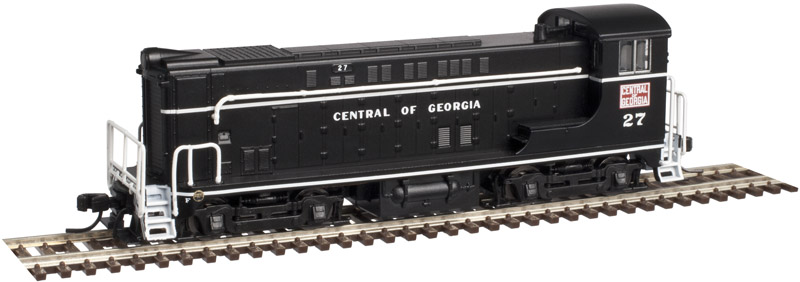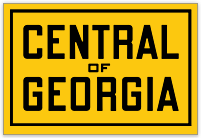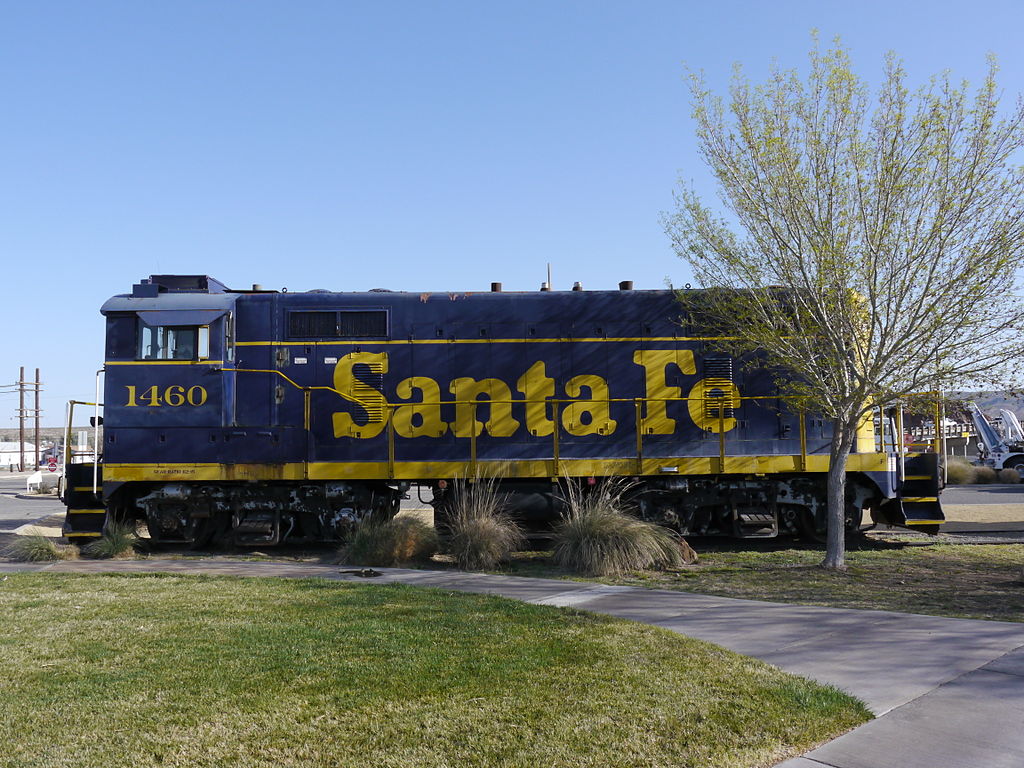Prototype History: The Baldwin VO-1000 was a diesel-electric locomotive (switcher) built by Baldwin Locomotive Works between January, 1939 and December, 1946. The 236,260–242,200 lb (107,170–109,860 kg) units were powered by a normally aspirated eight-cylinder diesel engine rated at 1,000 horsepower (746 kW), and rode on a pair of two-axle trucks in a B-B wheel arrangement. These were either the AAR Type-A switcher trucks, or the Batz truck originally developed by the Atchison, Topeka and Santa Fe Railway as a leading truck for steam locomotives. 548 examples of this model were built for American railroads, including examples for the Army and Navy.
Between June and August, 1945 Baldwin supplied 30 Co-Co road locomotives with 8-cylinder VO engines for export to the Soviet Union as their Дб20 (Db20) class.
There are at least eight intact examples of the VO-1000 that are known to survive today, most of which are owned by museums or historical societies. However, a VO-1000m is owned by the Northwestern Pacific Railroad, a local freight carrier based out of Schellville, California.
From Wikipedia
Between June and August, 1945 Baldwin supplied 30 Co-Co road locomotives with 8-cylinder VO engines for export to the Soviet Union as their Дб20 (Db20) class.
There are at least eight intact examples of the VO-1000 that are known to survive today, most of which are owned by museums or historical societies. However, a VO-1000m is owned by the Northwestern Pacific Railroad, a local freight carrier based out of Schellville, California.
From Wikipedia
Road Name History: The Central of Georgia Railway (reporting mark CG) started as the Central Rail Road and Canal Company in 1833. As a way to better attract investment capital, the railroad changed its name to Central Rail Road and Banking Company of Georgia. This railroad was constructed to join the Macon and Western Railroad at Macon, Georgia, and run to Savannah. This created a rail link from Chattanooga, on the Tennessee River, to seaports on the Atlantic Ocean. It took from 1837 to 1843 to build the railroad from Savannah to the eastern bank of the Ocmulgee River at Macon; a bridge into the city was not built until 1851.
During the Savannah Campaign of the American Civil War, conducted during November and December 1864, Federal troops tore up the rails and converted them into "Sherman's neckties."
At the end of 1956 the CofG operated 1,764 miles (2,839 km) of road and 2,646 miles (4,258 km) of track; that year it reported 3208 million net ton-miles of revenue freight and 73 million passenger-miles. Those totals do not include the 144-mile (232 km) S&A, the 10-mile (16 km) L&W, the 20-mile (32 km) WS or the 36-mile (58 km) W&T. The Central became a Southern Railway subsidiary on June 17, 1963. In 1971 the Southern formed the Central of Georgia Railroad to merge the Central of Georgia Railway, the Savannah and Atlanta Railway, and the Wrightsville and Tennille Railroad.
Today the Central of Georgia exists only as a paper railroad within the Norfolk Southern Railway group. 42 miles (68 km) of the CofG's former mainline are currently leased by the Chattooga and Chickamauga Railway from the State of Georgia.
During the Savannah Campaign of the American Civil War, conducted during November and December 1864, Federal troops tore up the rails and converted them into "Sherman's neckties."
At the end of 1956 the CofG operated 1,764 miles (2,839 km) of road and 2,646 miles (4,258 km) of track; that year it reported 3208 million net ton-miles of revenue freight and 73 million passenger-miles. Those totals do not include the 144-mile (232 km) S&A, the 10-mile (16 km) L&W, the 20-mile (32 km) WS or the 36-mile (58 km) W&T. The Central became a Southern Railway subsidiary on June 17, 1963. In 1971 the Southern formed the Central of Georgia Railroad to merge the Central of Georgia Railway, the Savannah and Atlanta Railway, and the Wrightsville and Tennille Railroad.
Today the Central of Georgia exists only as a paper railroad within the Norfolk Southern Railway group. 42 miles (68 km) of the CofG's former mainline are currently leased by the Chattooga and Chickamauga Railway from the State of Georgia.
Brand/Importer Information: In 1924 Stephan Schaffan, Sr. founded the Atlas Tool Company in Newark, New Jersey. In 1933 his son, Stephan Schaffan, Jr., came to work for his father at the age of sixteen. Steve Jr. built model airplanes as a hobby and frequented a local hobby shop. Being an enterprising young man, he would often ask the owner if there was anything he could do to earn some extra spending money. Tired of listening to his requests, the hobby-store owner threw some model railroad track parts his way and said, "Here, see if you can improve on this".
In those days, railroad modelers had to assemble and build everything from scratch. Steve Jr. created a "switch kit" which sold so well, that the entire family worked on them in the basement at night, while doing business as usual in the machine shop during the day.
Subsequently, Steve Jr. engineered the stapling of rail to fiber track, along with inventing the first practical rail joiner and pre-assembled turnouts and flexible track. All of these products, and more, helped to popularize model railroading and assisted in the creation of a mass-market hobby. The budding entrepreneur quickly outgrew the limitations of a basement and small garage operation. Realizing they could actually make a living selling track and related products, Steve and his father had the first factory built in Hillside, New Jersey at 413 Florence Avenue in 1947. On September 30, 1949, the Atlas Tool Company was officially incorporated as a New Jersey company.
In 1985, Steve was honored posthumously for his inventions by the Model Railroad Industry Association and was inducted into the Model Railroad Industry Hall of Fame in Baltimore, Maryland. In addition, Steve was nominated and entered into the National Model Railroad Association Pioneers of Model Railroading in 1995.
In the early 1990s, the Atlas Tool Company changed its name to Atlas Model Railroad Company, Inc.
In those days, railroad modelers had to assemble and build everything from scratch. Steve Jr. created a "switch kit" which sold so well, that the entire family worked on them in the basement at night, while doing business as usual in the machine shop during the day.
Subsequently, Steve Jr. engineered the stapling of rail to fiber track, along with inventing the first practical rail joiner and pre-assembled turnouts and flexible track. All of these products, and more, helped to popularize model railroading and assisted in the creation of a mass-market hobby. The budding entrepreneur quickly outgrew the limitations of a basement and small garage operation. Realizing they could actually make a living selling track and related products, Steve and his father had the first factory built in Hillside, New Jersey at 413 Florence Avenue in 1947. On September 30, 1949, the Atlas Tool Company was officially incorporated as a New Jersey company.
In 1985, Steve was honored posthumously for his inventions by the Model Railroad Industry Association and was inducted into the Model Railroad Industry Hall of Fame in Baltimore, Maryland. In addition, Steve was nominated and entered into the National Model Railroad Association Pioneers of Model Railroading in 1995.
In the early 1990s, the Atlas Tool Company changed its name to Atlas Model Railroad Company, Inc.
Item created by: gdm on 2016-04-02 12:57:20. Last edited by Alain LM on 2021-06-21 12:01:35
If you see errors or missing data in this entry, please feel free to log in and edit it. Anyone with a Gmail account can log in instantly.
If you see errors or missing data in this entry, please feel free to log in and edit it. Anyone with a Gmail account can log in instantly.











